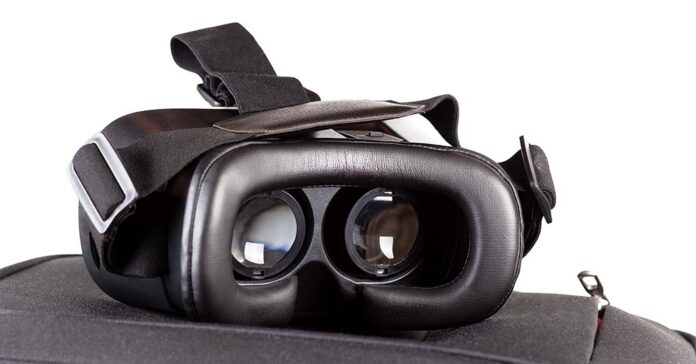Are mobile VR headsets worth it? Should you get a smartphone virtual reality headset this year? Well, here is our detailed write-up about the current state of the smartphone VR and the mobile virtual reality technology in general, alongside with the overall history of the smartphone-based commercial VR equipment. Enjoy!
- What exactly is smartphone VR? + mobile VR history
- Is smartphone VR dead?
- Smartphone VR headset cons
- Current approach to mobile wireless VR – the better way
- The conclusion – should you get a smartphone-based VR headset?
This web portal is reader-supported, and is a part of the Amazon Services LLC Associates Program and the eBay Partner Network. When you buy using links on our site, we may earn an affiliate commission!
Check out also: Are Virtual Reality Headsets Worth It? (Should You Get One?)
What exactly is smartphone VR? + mobile VR history
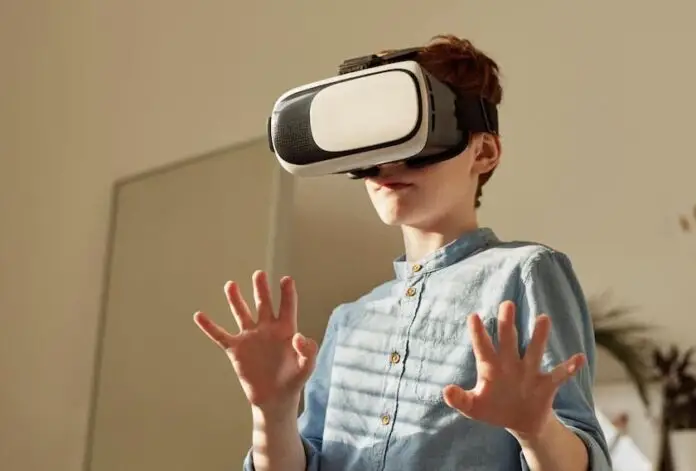
Smartphone VR (sometimes also called mobile VR) is the older type of virtual reality technology which essentially incorporates your smartphone into the headset and uses it as its main display.
Mobile virtual reality headsets such as the one you can see in the image above, are used with your smartphone which you’re supposed to put inside them, fixing it right in front of your eyes, just before a set of very basic lenses. Basically, your smartphone acts as the headset’s display.
You could say that it all began with the rise of Google Cardboard back in June 2014, when the idea of using your smartphone’s display as an easier gateway to virtual reality came to be. Shortly after the premiere of the self-assembly Google cardboard headset, a large amount of other brand’s solutions flooded the market.
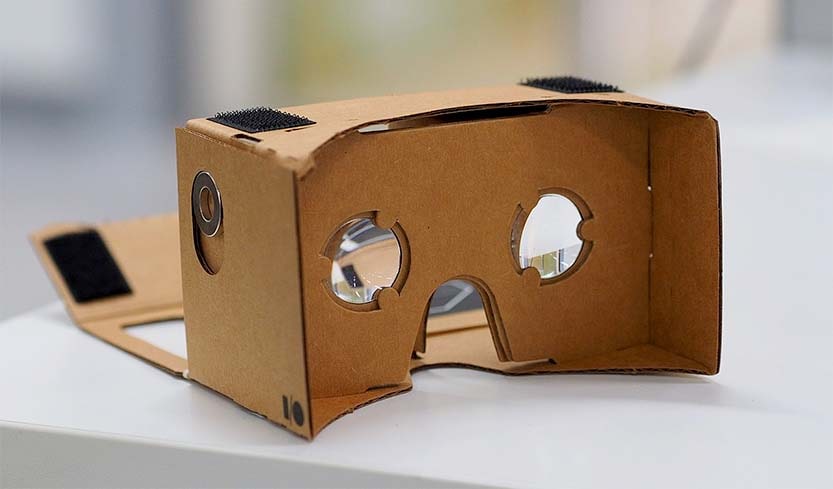
Each of the new “smartphone VR headsets” released featured new creative solutions, such as removable trays for your mobile phone, additional handheld controllers for interacting with the apps on your smartphone when it’s placed inside the headset, and better quality lenses which improved the visual experience which was still largely bottlenecked by the particular smartphone model that you’ve decided to put inside the device.
All this was essentially a cheap entry to the still very much simplified world of virtual reality, which was now accessible right from your smartphone’s screen. Keep in mind that in the years when the mobile phone based VR market was blooming, the actual modern mobile VR headsets like the Oculus Quest 2 weren’t yet a thing.
The very first thing we can safely call a modern mobile VR headset which didn’t make use of a smartphone display and didn’t have to be plugged into a PC was the Oculus Quest 1. It was released in 2019, many years after the initial craze for smartphone-based VR headsets.
In comparison, the second version of the Samsung Gear VR smartphone virtual reality headsets (and the very last one), was released back in 2015 – 3 years before the Quest 1 hit the market for the first time.
Is smartphone VR dead?
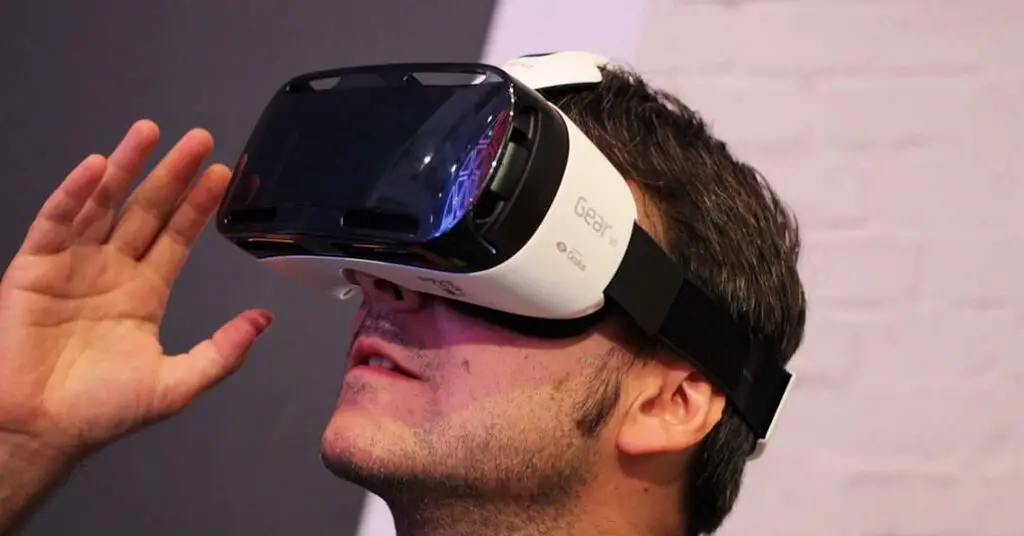
Well, yes, largely. The smartphone-based virtual reality technology is now long deprecated and no longer supported nor developed by any larger companies. The end of the smartphone VR epoch was looming around the corner for quite some time, until finally the official end of support for the latest versions of Samsung Gear VR, and the Google Daydream View headsets finally initiated the final end of the mobile VR era.
Currently the smartphone VR market is in kind of a weird state: hundreds of unsold smartphone based VR headsets are still available all throughout Amazon and other online marketplaces, but the Android and iOS smartphone VR software is largely lacking, and in many if not most cases it’s no longer updated or maintained.
With that said, there still are some interesting smartphone VR apps for Android and Apple devices available in both their respective official app stores, and the 3rd party app stores when it comes to apps that have been discontinued. The thing is that if you’d like to explore these, in some cases you might have to do some tinkering, and with some older apps you can face compatibility issues with the newer versions of Android OS.
While there is still much to be explored when it comes to the older smartphone VR software, keep in mind that the final quality of the image and of the general user experience will be on a much lower level than it would be with even the most basic modern virtual reality headsets available on the market right now.
In conclusion, nowadays, for anything other than novelty use, the mobile phone VR headsets are largely unreliable.
Smartphone VR headset cons
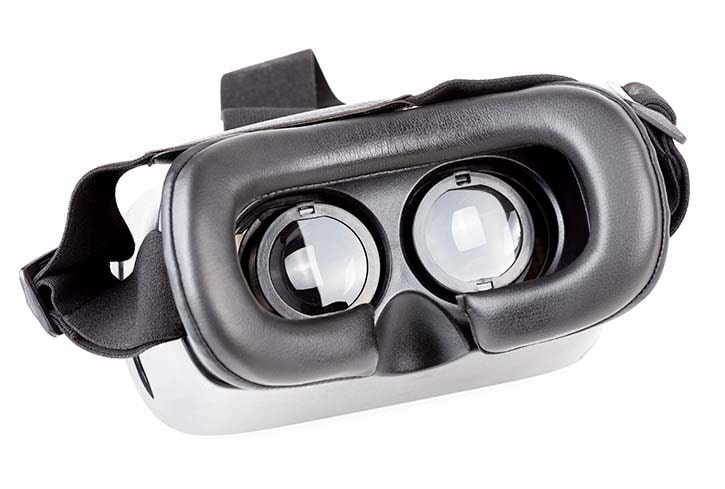
While the old type mobile VR headsets making use of smartphone displays were a neat entry point to the world of virtual reality for all interested back then, they had lots and lots of more and less visible disadvantages that in the end contributed to their final downfall.
In a short retrospective here are the main cons of the smartphone based VR headsets, the most prominent ones anyway:
- The screen quality – unless your smartphone features a UHD or a WQHD display (which is not that common even nowadays), you will most likely face the troubles of dealing with the significant screen-door effect. What this meant is that essentially you’ll be able to easily notice the individual pixels on your smartphone’s screen, which can in turn prevent you from having a fully immersive experience.
- Generally low FOV – the field of view on the smartphone based VR headsets will depend largely on your IPD (interpupillary distance) and on your smartphone’s display parameters. In general though, you can expect it to be somewhere around or under 90 degrees, which is not the best achievable score by today’s standards. This of course again, has a major impact on the immersion factor.
- Battery life – because your smartphone essentially becomes the heart of your mobile VR headset, you’ll quite obviously be able to use it only for as long as you won’t run out of juice. Once that happens, you’ll be forced to charge it, which is impossible when it’s still placed inside the headset.
- Control related issues – when your smartphone is already inserted into your mobile VR headset, by default you’ll have no way of controlling what’s happening on the screen without using a wireless controller (which some smartphone-based VR headsets come bundled with – but certainly not all). If you don’t own such a controller, you’ll be left with the controls that the creators of the app you’re currently using came up with. If that’s the case, for every major settings change or for app switching you will have to take your phone out of the headset. A major inconvenience.
- Normal smartphone usage – it goes without saying that once your phone is inside the headset, you won’t be able to use it for anything other than using the VR app you’ve just booted up. While this isn’t an issue all by itself, it may become troublesome when someone calls you, you’ll suddenly have to answer some messages, or you’ll be faced with unwanted notifications. While this can be solved by putting your phone into a “do not disturb” mode, it effectively causes you not to be able to use your smartphone until you’re done playing around with your headset.
- No access to higher display refresh rates – as you will have to rely solely on your mobile phone’s screen, you will also be tied to its maximum display refresh rate, which in most cases is ~60 hz at best (unless we’re talking about some higher-end flagship smartphones which can go higher). This is not a major disadvantage, but it’s still important to note.
- Comfort issues – most mobile VR headsets were made to be, well… cheap enough for everyone to buy on a whim. This unfortunately also meant that many mass produced devices were plasticky, low quality, and in general uncomfortable to use for longer periods of time. Not to mention, that in most cases they didn’t feature any type of counterweight in the back, so a heavy smartphone placed in the front of the headset many times over caused issues with the correct weight balance.
With all these issues it became really hard for the mobile VR headsets to compete with the newer solutions such as the Oculus Quest 1 which started to populate the market. In time, it became quite obvious that this isn’t the right way to progress, and the craze for smartphone VR devices slowly died out as the years came by.
Current approach to mobile wireless VR – the better way
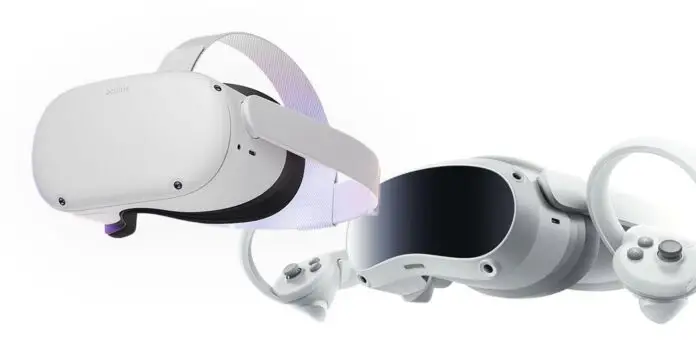
So, what is the best alternative to the smartphone VR headsets? Well, there seems to be one answer to that: regular “full-fledged” VR devices. And basically there are two types of these – modern mobile VR headsets and the wired ones designed to be used with a VR-ready desktop PC.
Read this to learn much more about this topic: Are Virtual Reality Headsets Worth It? (Should You Get One?)
While the regular wired VR headsets aren’t really a mobile solution and they require you to already have a VR-ready PC to connect them to, the modern type standalone mobile VR headsets are the way to go if you’re interested in the true wireless and computer-less VR experience.
Currently there are two headsets on the market that are really worth your attention if you’re seeking an easy and affordable way into VR – the Meta Quest 2 and the Pico 4.
Both of these are wireless, standalone devices that feature their own built-in high resolution displays, high quality lenses, rechargeable batteries and Android-based operating systems which allow you to experience VR games and apps without messing around with tangled wires or without worrying about your PC being able to handle your chosen VR games.
If that’s not quite enough for you, both of these can also be used in the classic PCVR context (while plugged into your PC using a special cable, or by connecting with your PC wirelessly).
They even feature reliable finger tracking so that you can transfer your hand movement into virtual reality using the built-in headset cameras! You can learn much more about the Pico 4 and the Quest 2 here.
The conclusion – should you get a smartphone-based VR headset?
In conclusion, if you’re planning to purchase a smartphone-based VR headset today, you need to take a few things into account.
- Smartphone VR technology is no longer supported by large companies and is mostly left for dead.
- Many apps and smartphone VR software is already outdated and in general new apps are no longer being developed.
- The user experience and convenience issues with the outdated mobile VR technology that we already listed, might simply make getting a smartphone-based VR headset not worth it.
- Entry level VR headsets such as the Meta Quest 2 and the Pico 4 are affordable and efficient gateway to the world of virtual reality. Much, much better than any smartphone-based VR headset you could get. Trust us on this one!
If you’d like to know more about the very best entry-level virtual reality headsets you can get today, check out this article – Meta Quest 2 vs. Pico 4 – Which One Should You Choose? – It’s really worth a quick read!

